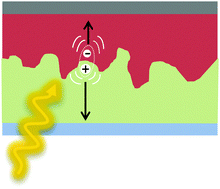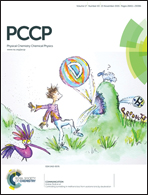“Hot or cold”: how do charge transfer states at the donor–acceptor interface of an organic solar cell dissociate?
Abstract
Electron transfer from an excited donor to an acceptor in an organic solar cell (OSC) is an exothermic process, determined by the difference in the electronegativities of donor and acceptor. It has been suggested that the associated excess energy facilitates the escape of the initially generated electron–hole pair from their mutual coulomb well. Recent photocurrent excitation spectroscopy on conjugated polymer/PCBM cells challenged this view. In this perspective we shall briefly outline the strengths and weaknesses of relevant experimental approaches and concepts. We shall enforce the notion that the charge separating state is a vibrationally cold charge transfer (CT) state. It can easily dissociate provided that (i) there is electrostatic screening at the interface and (ii) the charge carriers are delocalized, e.g. if the donor is a well ordered conjugated polymer. Both effects diminish the coulomb attraction and assure that the in-built electric field existing in the OSC under short current condition is already sufficient to separate most the CT states. The remaining CT excitations relax towards tail states of the disorder controlled density of states distribution, such as excimer forming states, that are more tightly bound and have longer lifetimes.

- This article is part of the themed collection: Celebrating our 2019 Prize and Award winners

 Please wait while we load your content...
Please wait while we load your content...